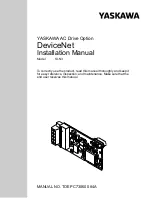
EN
20
- The declared vibration total values and
the declared noise emission values have
been measured in accordance with a
standard test method and may be used for
comparing one tool with another.
- The declared vibration total values and the
declared noise emission values may also
be used in a preliminary assessment of
exposure.
WARNINGS
- The vibration and noise emissions during
actual use of the power tool can differ from
the declared values depending on the ways
in which the tool is used especially what
kind of workpiece is processed; and
- It is necessary to identify safety measures
to protect the operator that are based on
an estimation of exposure in the actual
conditions of use (taking account of all
parts of the operating cycle such as the
times when the tool is switched off and
when it is running idle in addition to the
trigger time)
.
3. Safety Warnings
General power tool safety warnings
WARNING
Read all safety warnings, instructions,
illustrations and specifications provided with
this power tool.
Failure to follow all instructions
listed below may result in electric shock, fire
and /or serious injury.
Save all warnings and instructions for future
reference.
The term “power tool” in the warnings refers
to your mains-operated (corded) power tool or
battery-operated (cordless) power tool.
Work area safety
a)
Keep work area clean and well lit.
Cluttered
or dark areas invite accidents.
b)
Do not operate power tools in explosive
atmosphere, such as in the presence of
flammable liquids, gases or dust.
Power
tools create sparks which may ignite the
dust or fumes.
c)
Keep children and bystanders away while
operating a power tool.
Distractions can
cause you to lose control.
Electrical safety
a)
Power tool plugs must match the outlet.
Never modify the plug in any way. Do
not use any adapter plugs with earthed
(grounded) power tools.
Unmodified plugs
and matching outlets will reduce risk of
electric shock.
b)
Avoid body contact with earthed or
grounded surfaces, such as pipes,
radiators, ranges and refrigerators.
There
is an increased risk of electric shock if your
body is earthed or grounded.
c)
Do not expose power tools to rain or wet
conditions.
Water entering a power tool will
increase the risk of electric shock.
d)
Do not abuse the cord. Never use the cord
for carrying, pulling or unplugging the
power tool. Keep cord away from heat, oil,
sharp edges or moving parts.
Damaged or
entangled cords increase the risk of electric
shock.
e)
When operating a power tool outdoors,
use an extension cord suitable for outdoor
use.
Use of a cord suitable for outdoor use
reduces the risk of electric shock.
f)
If operating a power tool in a damp
location is unavoidable, use a residual
current device (RCD) protected supply.
Use of an RCD reduces the risk of electric
shock.
Personal Safety
a)
Stay alert, watch what you are doing and
use common sense when operating a
power tool. Do not use a power tool while
you are tired or under the influence of
drugs, alcohol or medication.
A moment
of inattention while operating power tools
may result in serious personal injury.
b)
Use personal protective equipment.
Always wear eye protection.
Protective
Содержание 158377.01
Страница 2: ...B C A 1 2 3 4 12 13 14 11 5 6 7 8 9 10...
Страница 57: ...cod articolo 158377 01...
















































